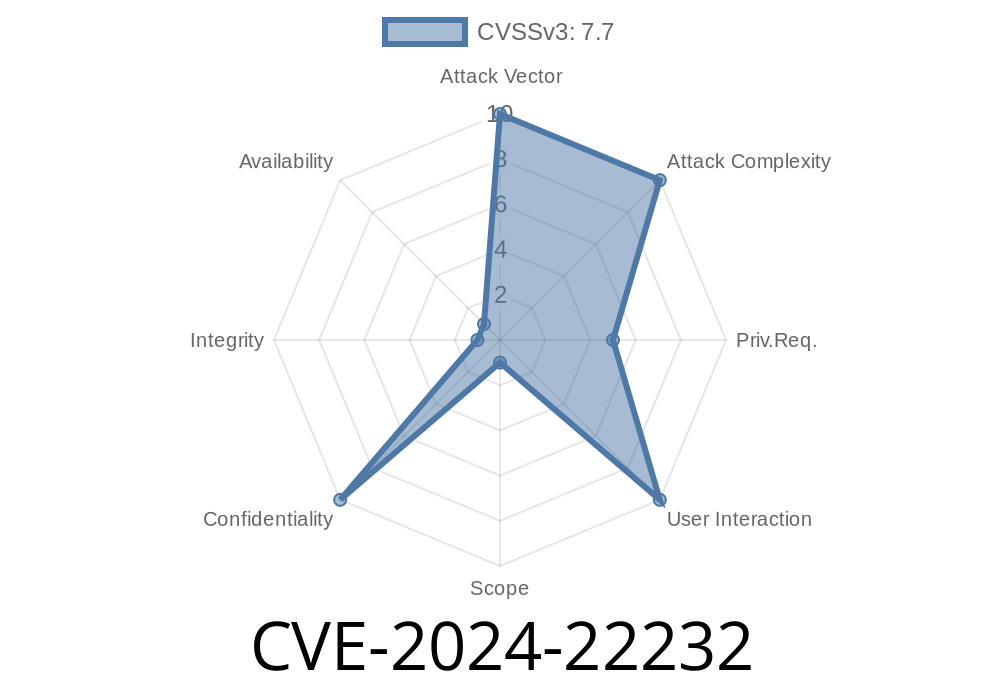The purpose of this blog post is to provide an in-depth analysis of the CVE-2024-22232 vulnerability involving a directory traversal in the Salt File Server. This exploit allows a malicious user to read an arbitrary file from a Salt master's filesystem through a specially crafted URL. We will discuss the issue in detail, provide a code snippet demonstrating the vulnerability, link to original references, and outline potential mitigation strategies.
Background
Salt is an open-source configuration management and remote execution tool. It uses a master-minion model: minions are the systems being managed, and the master is the central control server. One of the critical components of Salt is its file server, which is used to serve files and other resources to minions. This vulnerability affects the file server.
Original References
- [1] Official CVE Details: https://cve.mitre.org/cgi-bin/cvename.cgi?name=CVE-2024-22232
Exploit Details
The vulnerability in question is a directory traversal attack that can be executed by sending a specially crafted URL to the Salt file server. By manipulating directory path separators and escape characters in the URL request, the attacker can force the file server to disclose the content of any file on the Salt master's filesystem, potentially exposing sensitive information.
Let's say the Salt master has the following file structure
/salt
/public_files
/minion1
/file1.txt
/minion2
/file2.txt
/private_files
/secrets.txt
2. The Salt master file server should only provide access to the minion's individual directories under /public_files.
3. An attacker could send a specially crafted URL to the file server, requesting a traversal to the /private_files directory like this:
GET /public_files/minion1/../../private_files/secrets.txt HTTP/1.1
Host: salt-master.example.com
4. Due to how the file server processes the URL, it will mistakenly provide the attacker with the content of the /private_files/secrets.txt file, even though that should not be accessible.
To prevent this vulnerability from being exploited, there are a few recommended countermeasures
1. Apply patches: Make sure your Salt Stack software is up-to-date with the latest security updates and patches. The vendor has provided a fix in the following versions (update to those as applicable):
2. Validate user input: Enforcing strict URL input validation and rejecting any requests containing path traversal patterns can be an effective way to prevent this exploit. Example patterns to look for include " ../ " (double dot slash) and " ..\ " (double dot backslash) sequences.
3. Use a WAF (Web Application Firewall): Implementing a WAF to filter incoming traffic can help identifying and blocking any malicious requests aiming to exploit the directory traversal vulnerability.
Conclusion
The CVE-2024-22232 vulnerability poses a significant risk to the Salt file server, potentially allowing unauthorized access to sensitive information on the Salt master's filesystem. Users should make sure to apply the necessary patches and follow the recommended countermeasures to mitigate the risk associated with this vulnerability.
Timeline
Published on: 06/27/2024 07:15:54 UTC
Last modified on: 06/27/2024 12:47:19 UTC
